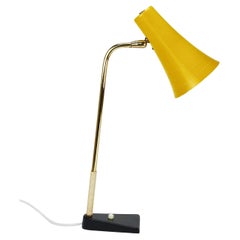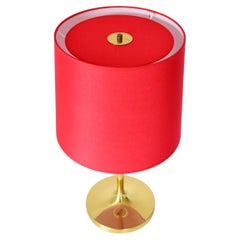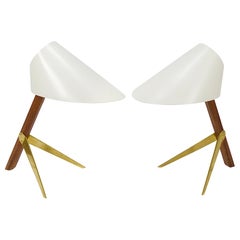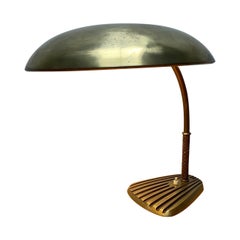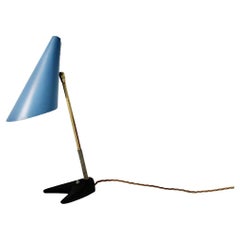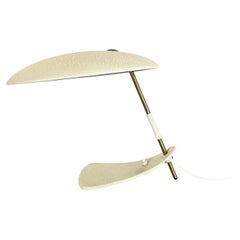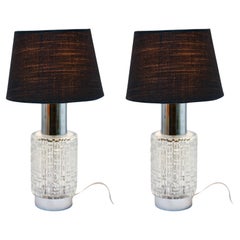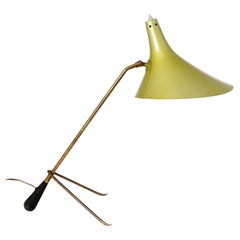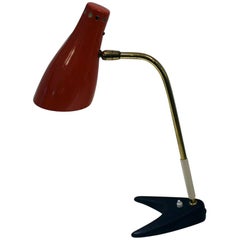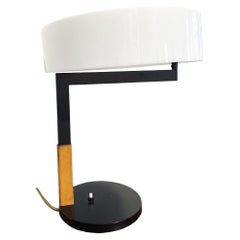Kalmar Desk Lamp
Mid-20th Century Austrian Mid-Century Modern Table Lamps
Metal, Brass, Iron
Vintage 1960s Austrian Mid-Century Modern Table Lamps
Brass
Mid-20th Century Austrian Mid-Century Modern Table Lamps
Metal, Brass
Mid-20th Century Austrian Mid-Century Modern Table Lamps
Brass
Vintage 1950s Austrian Mid-Century Modern Table Lamps
Metal, Iron
Mid-20th Century Austrian Bauhaus Table Lamps
Metal
Mid-20th Century German Mid-Century Modern Table Lamps
Chrome
Vintage 1950s Austrian Mid-Century Modern Table Lamps
Metal, Brass
Recent Sales
20th Century Austrian Mid-Century Modern Table Lamps
Brass
Vintage 1960s Austrian Mid-Century Modern Table Lamps
Metal
Vintage 1960s Austrian Mid-Century Modern Table Lamps
Brass
Vintage 1950s Austrian Mid-Century Modern Table Lamps
Brass, Metal
Mid-20th Century Austrian Mid-Century Modern Table Lamps
Brass
Vintage 1950s American Mid-Century Modern Table Lamps
Brass, Steel
Vintage 1950s Austrian Table Lamps
Ormolu
Vintage 1960s Austrian Mid-Century Modern Table Lamps
Brass
Vintage 1960s Austrian Mid-Century Modern Table Lamps
Brass
Vintage 1960s Austrian Table Lamps
Mid-20th Century German Mid-Century Modern Table Lamps
Chrome
Mid-20th Century German Mid-Century Modern Table Lamps
Chrome
Mid-20th Century Austrian Mid-Century Modern Table Lamps
Brass
Vintage 1950s Austrian Table Lamps
Vintage 1960s Austrian Mid-Century Modern Table Lamps
Brass
Vintage 1950s Austrian Table Lamps
Vintage 1950s Austrian Mid-Century Modern Table Lamps
Vintage 1960s Austrian Modern Table Lamps
Brass
Vintage 1950s Austrian Mid-Century Modern Table Lamps
Vintage 1950s Austrian Table Lamps
Brass
Vintage 1950s Austrian Mid-Century Modern Table Lamps
People Also Browsed
21st Century and Contemporary American Modern Side Tables
Iron
2010s Dutch Modern Vases
Marble
2010s Italian Renaissance Wall Mirrors
Glass
Mid-20th Century Italian Mid-Century Modern Dining Room Chairs
Leather, Cane, Walnut
2010s Philippine Mid-Century Modern Side Tables
Rattan
Mid-20th Century Swedish Scandinavian Modern Lounge Chairs
Fabric, Velvet, Birch
2010s American Organic Modern Flush Mount
Brass
Mid-20th Century French Mid-Century Modern Bird Cages
Brass
Vintage 1940s Italian Mid-Century Modern Night Stands
Brass
Mid-20th Century American Wall Clocks
Walnut
Mid-20th Century European Mid-Century Modern Coat Racks and Stands
Brass
21st Century and Contemporary Mexican Mid-Century Modern Table Lamps
Clay, Linen
21st Century and Contemporary Moroccan Organic Modern Doors and Gates
Brass
Vintage 1940s Swedish Scandinavian Modern Lounge Chairs
Fabric, Birch
Vintage 1960s Swedish Scandinavian Modern Planters, Cachepots and Jardin...
Ceramic
Mid-20th Century Dutch Mid-Century Modern Stools
Metal
Kalmar Desk Lamp For Sale on 1stDibs
How Much is a Kalmar Desk Lamp?
Finding the Right Table-lamps for You
Well-crafted antique and vintage table lamps do more than provide light; the right fixture-and-table combination can add a focal point or creative element to any interior.
Proper table lamps have long been used for lighting our most intimate spaces. Perfect for lighting your nightstand or reading nook, table lamps play an integral role in styling an inviting room. In the years before electricity, lamps used oil. Today, a rewired 19th-century vintage lamp can still provide a touch of elegance for a study.
After industrial milestones such as mass production took hold in the Victorian era, various design movements sought to bring craftsmanship and innovation back to this indispensable household item. Lighting designers affiliated with Art Deco, which originated in the glamorous roaring ’20s, sought to celebrate modern life by fusing modern metals with dark woods and dazzling colors in the fixtures of the era. The geometric shapes and gilded details of vintage Art Deco table lamps provide an air of luxury and sophistication that never goes out of style.
After launching in 1934, Anglepoise lamps soon became a favorite among modernist architects and designers, who interpreted the fixture as “a machine for lighting,” just as Le Corbusier had reimagined the house as “a machine for living in.” The popular task light owed to a collaboration between a vehicle-suspension engineer by the name of George Carwardine and a West Midlands springs manufacturer, Herbert Terry & Sons.
Some mid-century modern table lamps, particularly those created by the likes of Joe Colombo and the legendary lighting artisans at Fontana Arte, bear all the provocative hallmarks associated with Space Age design. Sculptural and versatile, the Louis Poulsen table lamps of that period were revolutionary for their time and still seem innovative today.
If you are looking for something more contemporary, industrial table lamps are demonstrative of a newly chic style that isn’t afraid to pay homage to the past. They look particularly at home in any rustic loft space amid exposed brick and steel beams.
Before you buy a desk lamp or table lamp for your living room, consider your lighting needs. The Snoopy lamp, designed in 1967, or any other “banker’s lamp” (shorthand for the Emeralite desk lamps patented by H.G. McFaddin and Company), provides light at a downward angle that is perfect for writing, while the Fontana table lamp and the beloved Grasshopper lamp by Greta Magnusson-Grossman each yield a soft and even glow. Some table lamps require lampshades to be bought separately.
Whether it’s a classic antique Tiffany table lamp, a Murano glass table lamp or even a bold avant-garde fixture custom-made by a contemporary design firm, the right table lamp can completely transform a room. Find the right one for you on 1stDibs.
Read More
This Paavo Tynell Chandelier Is a Radiant Bouquet
The alluring pendant light exemplifies the designer’s winsome mid-career work.
Why Is Italy Such a Hotbed of Cool Design?
Patrizio Chiarparini of Brooklyn’s Duplex gallery sheds light on the lasting legacy of Italy’s postwar furniture boom.
See How New York City Designers Experiment on Their Own Homes
There are many lessons to be learned from the lofts, apartments and townhouses of architects and decorators in Manhattan and beyond.
Jeff Andrews Captures Old Hollywood Glamour in His Cinematic Spaces
Having created extravagant homes for reality TV’s biggest stars, the designer is stepping into the spotlight with his first book.
New Orleans’ Lee Ledbetter Makes Design Magic by Mixing Past and Present
The Louisiana-born and -bred architect talks to 1stdibs about the art of making timeless places that matter.
Desert Modern Designer Arthur Elrod Finally Gets His Day in the Sun
The Palm Springs interior decorator developed a mid-century style that defined the vacation homes of celebrities and other notables, including Bob Hope and Lucille Ball.
From the Hamptons to Palm Springs, FormArch’s Homes Embody Both Comfort and Cool
The houses from this New York studio cloak modernist tendencies within what are often more traditional trappings.
8 Mid-Century Lighting Makers
In the market for a fantastic fixture from the 1940s, ’50s or ’60s? Here are some names to know.
